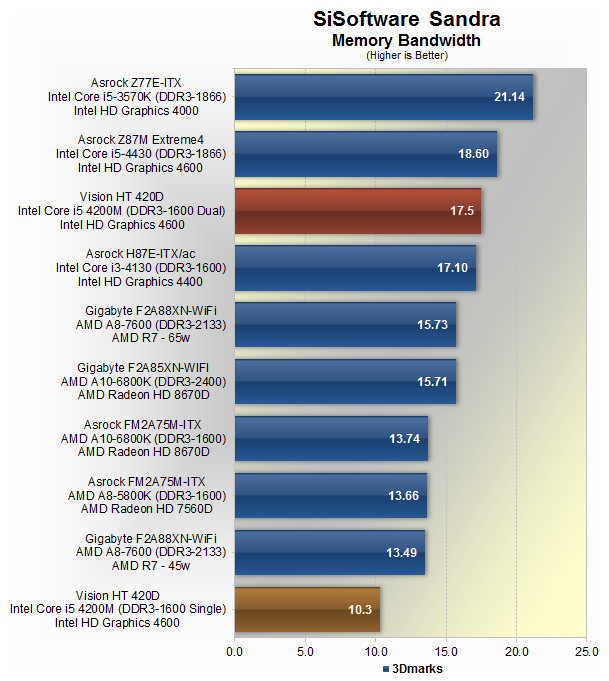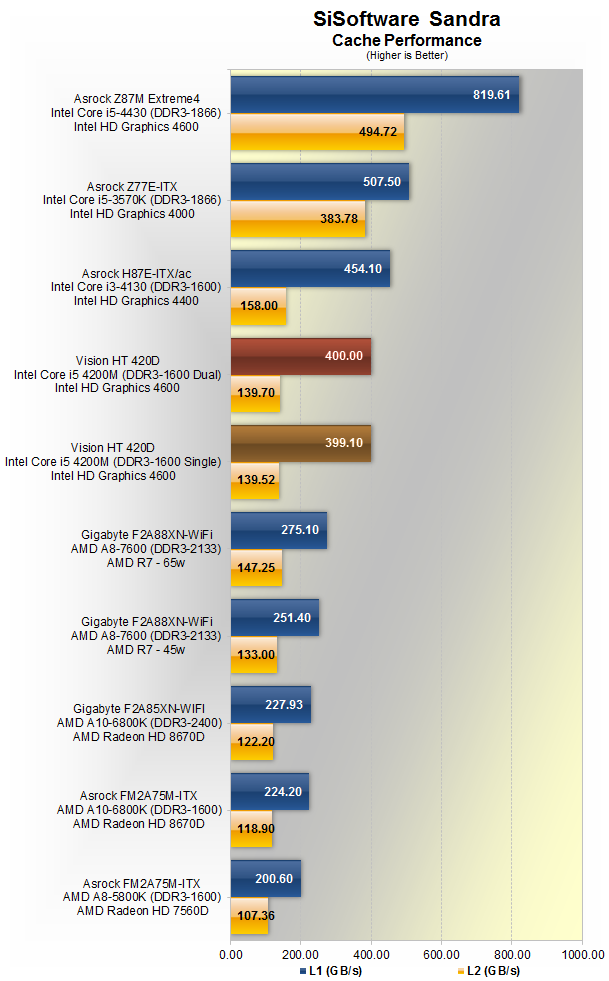Specs & Memory Performance
|
Asrock Vision HT 420D
|
Intel Haswell System Specs
|
|
AMD APU System Specs
|
Intel Ivy Bridge System Specs
|
Something we noticed right away when dismantling the Asrock Vision HT 420D is that it was fitted with just a single DDR3 memory module. While this provided a 4GB capacity, it didn't allow the Core i5-4200M processor to take advantage of its dual-channel memory controller.
By only including one memory module, Asrock has limited the processor to single-channel mode. We suspected this would have a major negative impact on performance so we tested the Vision HT 420D in both single and dual-channel modes.

The single-channel configuration limited the Asrock Vision HT 420D to just 10.3GB/s of bandwidth, slower than any of the desktop systems we used for comparison. However once we installed another DDR3 module allowing for dual-channel memory, the throughput soared 70% to 17.5GB/s.

That extra bandwidth doesn't affect the cache performance. While the Core i5-4200M delivered similar L2 cache performance to the AMD A8-7600 (Steamroller), the L1 performance was still considerably faster.

